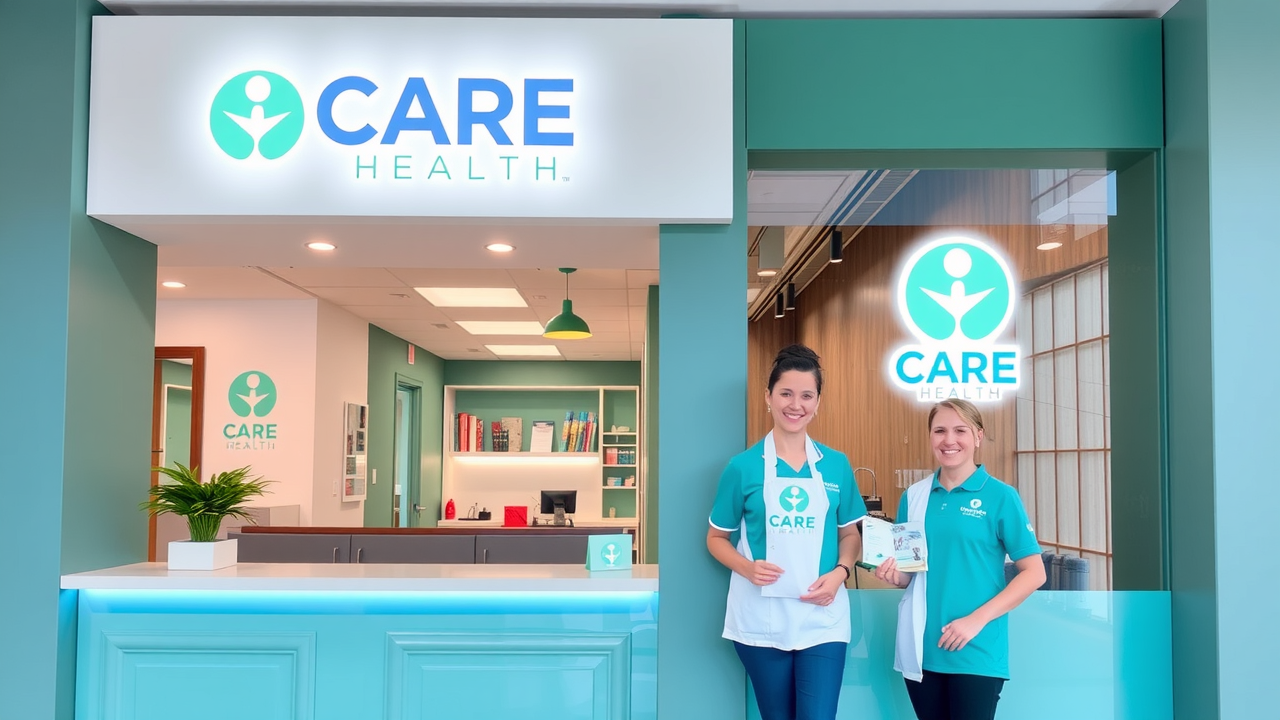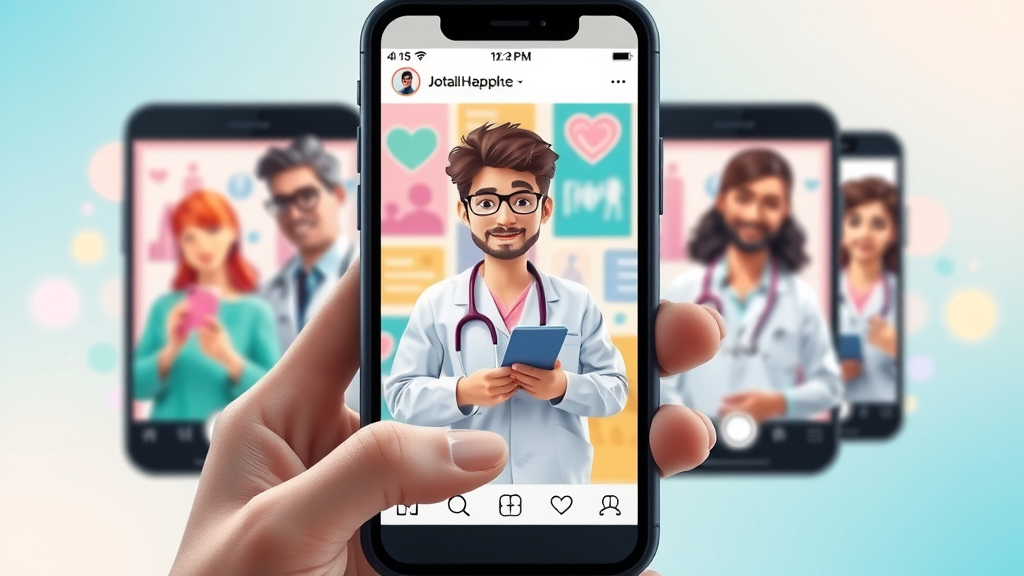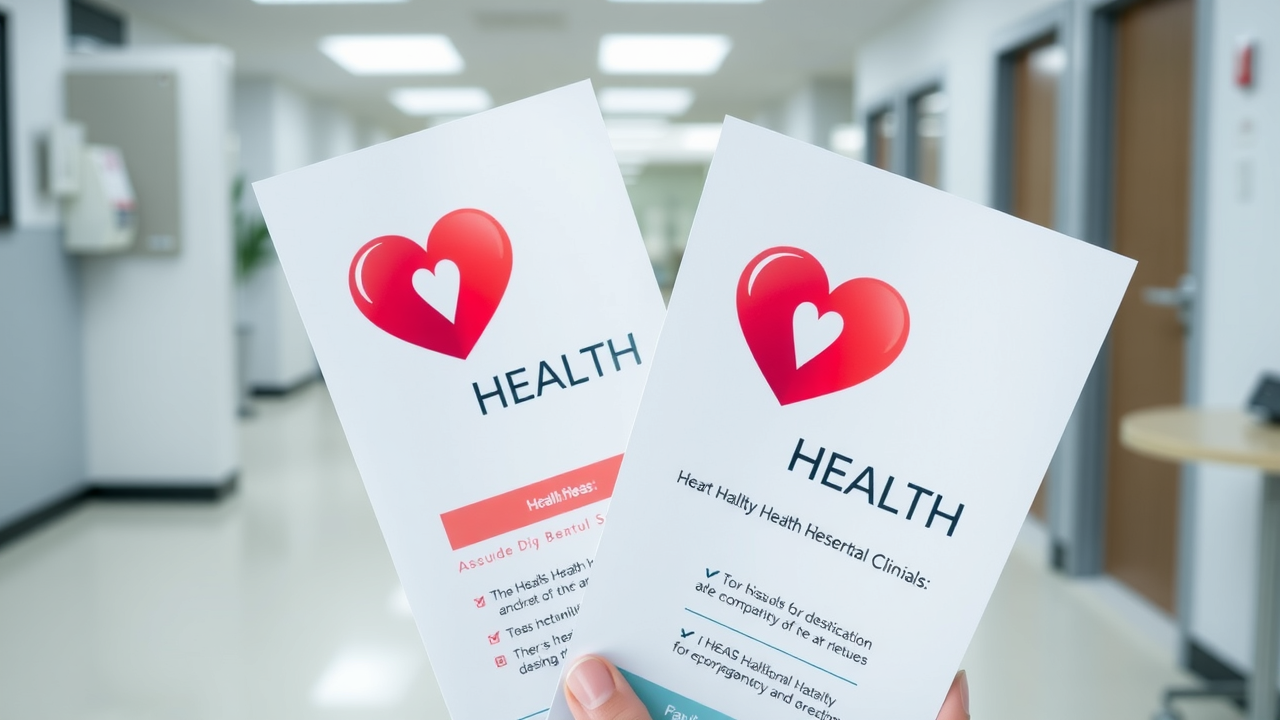
Did you know that patients form opinions about a healthcare provider’s trustworthiness within the first seven seconds of seeing their visual branding? In an industry where trust can literally save lives, your medical practice’s visuals are much more than decoration. Healthcare brand visuals—like your logo, color palette, and imagery—directly influence how patients feel, how staff identify with the workplace, and how your community perceives your care brand. In this article, we’ll explore why visuals matter so much for healthcare providers and exactly how you can use them to create a more welcoming, trustworthy, and patient-centered experience.
The Hidden Power of Healthcare Brand Visuals: Surprising Facts and Why They Matter
Visuals play an unexpected yet powerful role in patient experience and community trust. According to recent healthcare marketing studies, over 80% of patients say that a provider’s visual branding—such as office design, logo design, and staff uniforms—directly shapes their first impression and willingness to seek care. Consistent healthcare brand visuals aren’t only about looking good; they are a strategic tool that helps patients feel safe, reassured, and welcomed. Every element, from the signage to the website’s color scheme, tells a silent story of what patients can expect from your care brand.
Strong brand visuals also matter behind the scenes for staff. A clearly defined visual identity unifies teams, boosts morale, and creates a sense of pride among healthcare professionals. When visuals are consistent and thoughtfully designed, they reinforce the healthcare organization’s mission, making even routine interactions feel more purposeful. In a competitive healthcare market, memorable branding often becomes the deciding factor when patients choose one provider over another.
For healthcare practices looking to maximize the impact of their visual identity, integrating these elements with a robust reputation management plan is essential. Discover how a comprehensive reputation strategy can further strengthen patient trust and amplify the benefits of your brand visuals across every touchpoint.

Understanding Healthcare Brand Visuals: Defining Visual Identity and Brand Identity
What Is Brand Identity in the Healthcare Market?
Brand identity in the healthcare market goes beyond just a logo or color scheme. It’s the entire collection of visual cues, messages, and experiences that shape how patients, families, and the broader community perceive a care brand. For healthcare providers and organizations, brand identity is built from the ground up, starting with core values, mission, and target audience. It includes everything from health logo design to the uniforms staff wear to the way your online presence communicates compassion and professionalism. Healthcare brand identity is what makes your practice recognizable, memorable, and trusted in a field full of choices.
For example, a medical practice that prioritizes mental health and comfort might use calming blues and greens in its visual identity, soft natural lighting in waiting rooms, and friendly imagery on its website. In contrast, a specialized health group might opt for a bolder logo design and a more clinical feel to emphasize expertise and precision. Ultimately, your branding process should ensure that every interaction—online or offline—reflects what your healthcare practice stands for.
Why a Strong Visual Identity Matters in Healthcare Practices
A strong visual identity isn’t just about aesthetics—it’s a strategic asset in delivering quality care. Patients often arrive feeling anxious or vulnerable, and clear branding helps translate these emotions into a sense of comfort and reliability. Consistency across all materials—from appointment cards to care apps—signals that a healthcare provider is organized, professional, and attentive to details. These cues foster trust, which is the backbone of any healthcare provider-patient relationship.
A strong visual identity helps differentiate your care brand in the busy healthcare market. When health logo elements and color palettes remain consistent, patients recognize your brand instantly—whether it’s on a billboard, social media post, or the front door of your clinic. Strong branding can even improve online reviews, as patients equate clean, modern visuals with a higher standard of care, transparency, and respect.

The Key Elements That Define Memorable Healthcare Brand Visuals
-
Logo and Symbolism: A strong logo and meaningful symbols help patients recognize and remember your practice, reinforcing trust and professionalism.
-
Color Schemes: The right color palette can communicate warmth, care, and credibility—essential traits for connecting with patients emotionally.
-
Typography and Consistency Across Care Brands: Consistent, readable fonts unify your brand identity across platforms, helping your medical practice appear more polished and dependable.
-
Imagery: Authentic photos and visuals featuring real people and care moments help patients feel more connected and valued.
-
Brand Voice in Visuals: Ensure that your visual branding complements your written tone, creating a cohesive, trustworthy experience at every patient touchpoint.
Logo design and symbolism are at the heart of healthcare branding. A well-crafted health logo is instantly identifiable, setting your care brand apart in the healthcare industry’s crowded landscape. Color scheme choices, often soft blues and greens, evoke calm and trust. Typography matters too; clear, consistent fonts reinforce accessibility and professionalism, ensuring every touchpoint—from business cards to healthcare apps—feels cohesive.

How Healthcare Brand Visuals Shape the Patient Experience
Visual Identity Touchpoints: From Waiting Rooms to Digital Platforms
Every location where your healthcare brand visuals appear is a touchpoint that shapes the patient experience. Consider the journey: a patient first sees your medical practice online, then steps into your waiting room, interacts with staff, and follows up through a healthcare app or patient portal. Each moment presents an opportunity to reinforce trust and consistency. Branded décor with a calming color palette in the lobby, staff wearing coordinated uniforms with the health logo, and thoughtfully designed patient forms all contribute to a holistic brand experience.
Digital touchpoints are equally powerful. A user-friendly website with consistent branding, clear navigation, and matching imagery reassures patients that your healthcare provider values professionalism. Social media profiles also deliver instant cues about your care brand, from Instagram feeds showcasing compassionate staff to informative graphics that help patients understand treatments. These visual identity elements reduce uncertainty and make your practice memorable long after each visit.
Boosting Patient Comfort and Reducing Anxiety with a Strong Brand
Anxiety is common in medical settings, but strong healthcare brand visuals help put patients at ease. Calming colors, soft lighting, and welcoming signage create a sense of safety and familiarity. When patients see harmony in design—whether in the physical space or digital communications—they’re more likely to trust the healthcare provider, ask questions, and follow medical advice.
Every detail communicates care. Details like natural sanctuary-inspired imagery, clear directions, and friendly visuals make patients feel respected and valued. These small touches can make all the difference, especially for those with apprehension about healthcare organizations. Over time, consistent branding reinforces positive patient experience, leading to better satisfaction and improved health outcomes.

Building a Strong Healthcare Brand: Visual Strategies for Lasting Community Trust
Consistency: The Secret to Building a Strong Care Brand Identity
For a healthcare provider or practice, consistency is everything. Brand guidelines should ensure that every communication, no matter the platform, carries the same visual cues, from logo design to color palette and typography. This builds trust both internally among staff and externally with patients. When patients see the same symbols and styles across physical signage, uniforms, and digital spaces, they come to expect a certain level of quality care every time they interact with your healthcare organization.
Consistency also supports your marketing strategy. It amplifies message recall and simplifies the branding process, making it easier to deliver an aligned experience in every campaign. With today’s healthcare market crowded by choices, a strong care brand grounded in visual harmony can drive loyalty and community advocacy.
Authenticity and Inclusivity in Healthcare Practices
Patients are savvy enough to spot branding that feels forced or generic. Authenticity comes from visuals that reflect your real people: the doctors, nurses, and staff who make your care brand unique. Photographs should showcase genuine moments in your healthcare group, embracing diversity in skin tone, ability, age, and background. This not only meets modern expectations of inclusivity but also broadens your healthcare practice’s appeal to a wider community audience.
When authenticity and inclusivity guide your visuals, your brand identity becomes more relatable and approachable. Patients—especially those new to your healthcare service—feel more welcome, knowing their background and needs are respected. Over time, authentic branding builds reputation, staff retention, and lasting community trust.

Aligning Healthcare Brand Visuals with Modern Marketing Campaigns
Digital-First Designs: Leveraging Social Media and Website Imagery
Today’s patients spend as much time researching providers online as they do in person. That’s why digital-first design matters in building a strong brand. Your website, social media, and healthcare app should present the same quality and style reflected in your clinic. Use consistent colors, imagery, and messaging across all digital platforms to foster recognition and trust.
Effective marketing campaigns also leverage video content and infographics, which help humanize care and make your brand more approachable. Social media is a critical channel for showing your brand’s day-to-day life, highlighting real staff, success stories, and patient testimonials. This is not just healthcare marketing; it’s brand experience in action.
Social Media Success: Visual Storytelling for Healthcare Practices
Storytelling on platforms like Instagram and Facebook allows you to connect with your target audience authentically. Instagram strategies for healthcare brands include sharing team moments, patient milestones (with consent), and behind-the-scenes looks at your healthcare organization. This type of visual storytelling brings your brand identity to life and transforms followers into loyal advocates.
Video content is especially effective for explaining medical procedures, promoting health tips, and illustrating everyday compassion within your care brand. Above all, the key to social media success is visual consistency—every post, story, and share should look and feel like part of the same family, reinforcing your strong brand in every interaction.
-
Instagram strategies for healthcare brands
-
Video content: Humanizing care with brand visual identity
-
Engaging audiences through visual consistency

Healthcare Brand Visuals: Impact on Staff, Reputation, and Retention
Empowering Staff With a Unified Brand Identity
A unified visual identity empowers staff by instilling a sense of pride, professionalism, and belonging. When everyone—from the front desk to the surgical team—wears uniforms or badges with the same health logo, there’s a greater sense of team spirit and clarity about the care brand’s goals. Clear visual guidelines also make onboarding easier and help every team member, new or veteran, represent the healthcare provider’s mission.
Unified branding even influences recruitment and retention. Talented healthcare professionals are drawn to organizations that invest in their image and values. When your brand identity is clear and inspiring, it sends a signal: “This is a place where quality care and employee well-being matter.”
Reputation Management: How Healthcare Brand Visuals Foster Public Trust
In the digital era, reputation management is closely linked to visual identity. Patients often share photos or impressions of your clinic on online reviews or social media, amplifying your brand far beyond traditional marketing campaigns. Consistently high-quality visuals (like well-designed logos, thoughtful color palettes, and positive imagery) shape the public perception of your healthcare organization, making it easier to recover from negative feedback or build on positive momentum.
Organizations recognized for strong brand visuals are generally trusted more, even during crises, because the messaging and appearance reflect a commitment to serving the patient community thoughtfully and transparently.

Common Challenges in Creating Effective Healthcare Brand Visuals
-
Balancing professionalism and approachability in visual identity
-
Meeting accessibility standards in healthcare brand marketing
-
Updating legacy branding for modern healthcare practices
-
Gaining stakeholder buy-in for brand overhaul
Balancing professionalism with warmth is a common struggle for healthcare providers looking to update their visual identity. Too much clinical design can feel cold, while overly playful branding may undermine patient trust. Leading care brands solve this by carefully blending accessible design with recognizable corporate elements.
Accessibility is now an essential aspect of healthcare marketing, with fonts, color contrasts, and imagery all needing to meet standards that enable every patient to engage with your care brand. Updating legacy branding can also be a tall order, especially when aiming not to alienate loyal patients or team members. Gaining buy-in from every stakeholder requires transparent communication about the goals and values driving your brand refresh.

Step-by-Step Guide: Building a Strong Healthcare Brand Visual Identity
-
Define core values and mission
-
Audit the current visual identity
-
Research competitive care brand visuals
-
Collaborate with design experts focusing on healthcare practices
-
Implement changes across all platforms
-
Evaluate and refine based on patient feedback
Start by clarifying your healthcare group’s values, vision, and mission to create a foundation for your brand identity. Next, take a deep audit of every visual touchpoint—logos, signage, social media, staff attire—and evaluate them for consistency, clarity, and alignment. Benchmark your current visuals against leading competitors and standout healthcare brands. Note what resonates with patients and what sets your brand apart. Work with designers who specialize in healthcare practices. Their expertise ensures that every logo design, color palette, and image aligns with industry standards and communicates clearly.
Once designs are finalized, roll out updates across every physical and digital platform, including websites, clinics, mobile apps, and marketing materials. Finally, create feedback loops to continually gather input from patients and staff; refine your visual identity over time to ensure it evolves with your audience and the broader healthcare market.
Integrating Healthcare Brand Visuals Across Print and Digital Touchpoints
Coherent branding requires integrating your visual identity everywhere your brand appears. Printed brochures, appointment cards, and digital newsletters should all share the same health logo, color palette, and tone. Physical and digital environments—like waiting rooms and websites—should feel like parts of the same story. When a patient moves seamlessly from an Instagram post to your front desk, you know your brand identity is working.
Technological advances have made it easier than ever to roll out updates and print materials that match digital assets perfectly. Use checklists and frequent spot checks to maintain alignment across every channel. Consistent exposure to strong brand visuals reinforces your healthcare organization’s credibility and helps make your health brand top-of-mind for your community.

Final Thoughts on Healthcare Brand Visuals
Healthcare brand visuals are more than just aesthetic elements — they are critical tools for building trust, conveying professionalism, and connecting with patients on an emotional level. In an industry where empathy, reliability, and clarity are essential, visuals must reflect those values through consistent colors, typography, imagery, and iconography. A well-crafted visual identity reassures patients, helps them navigate complex information, and strengthens brand recognition across digital and physical touchpoints.
As healthcare continues to evolve, so too must its branding. Modern patients are informed, tech-savvy, and expect a seamless, user-friendly experience. Healthcare visuals should keep pace with these expectations by being accessible, inclusive, and mobile-friendly. Whether it’s a hospital network, private clinic, or wellness brand, investing in thoughtful visual design isn’t just good branding — it’s a vital part of delivering quality care and creating meaningful, long-lasting relationships with patients.

Frequently Asked Questions About Healthcare Brand Visuals
1. What is the most important visual element for a healthcare brand?
Consistency is the foundation—patients should immediately recognize your care brand wherever they see it, whether on physical signage, online platforms, or staff uniforms. A distinctive health logo and unified color palette help build instant recognition and trust.
2. How do visuals differ between large hospitals and small healthcare practices?
Large hospitals often use bold, institutional visuals to convey expertise and scale, while small practices prioritize approachable imagery and personal touches to build close patient relationships. Both must remain consistent across all touchpoints for maximum effect.
3. What role does brand identity play in marketing campaigns?
Brand identity drives every aspect of a healthcare provider’s marketing campaigns, from visual messaging and logo design to the tone of social media content. A defined brand identity creates coherence, making campaigns more memorable and effective.
4. Can brand visuals impact healthcare staff morale?
Absolutely. Staff members who connect with your visual identity feel more engaged and unified, improving job satisfaction and strengthening the quality of care delivered throughout your healthcare organization.
5. How do you measure the effectiveness of healthcare brand visuals?
Monitor patient feedback, online reviews, and metrics like website engagement or social media growth. Success also shows in higher patient satisfaction, community trust, and improved staff retention over time.

Bring Your Brand to Life Through Meaningful Visuals
Your healthcare brand visuals aren’t just decorative—they’re powerful tools that influence how patients perceive and trust your practice. From your logo to the imagery used on your website and social media, every visual element plays a role in shaping emotional connections, supporting consistency, and reinforcing your values across the patient journey.
If you're ready to turn those visuals into a competitive advantage, it’s time to align them with your practice's mission and voice. Learn how our branding experts can help you craft a cohesive visual identity that enhances trust, improves recognition, and deepens community connection.
 Add Row
Add Row  Add
Add 




Write A Comment